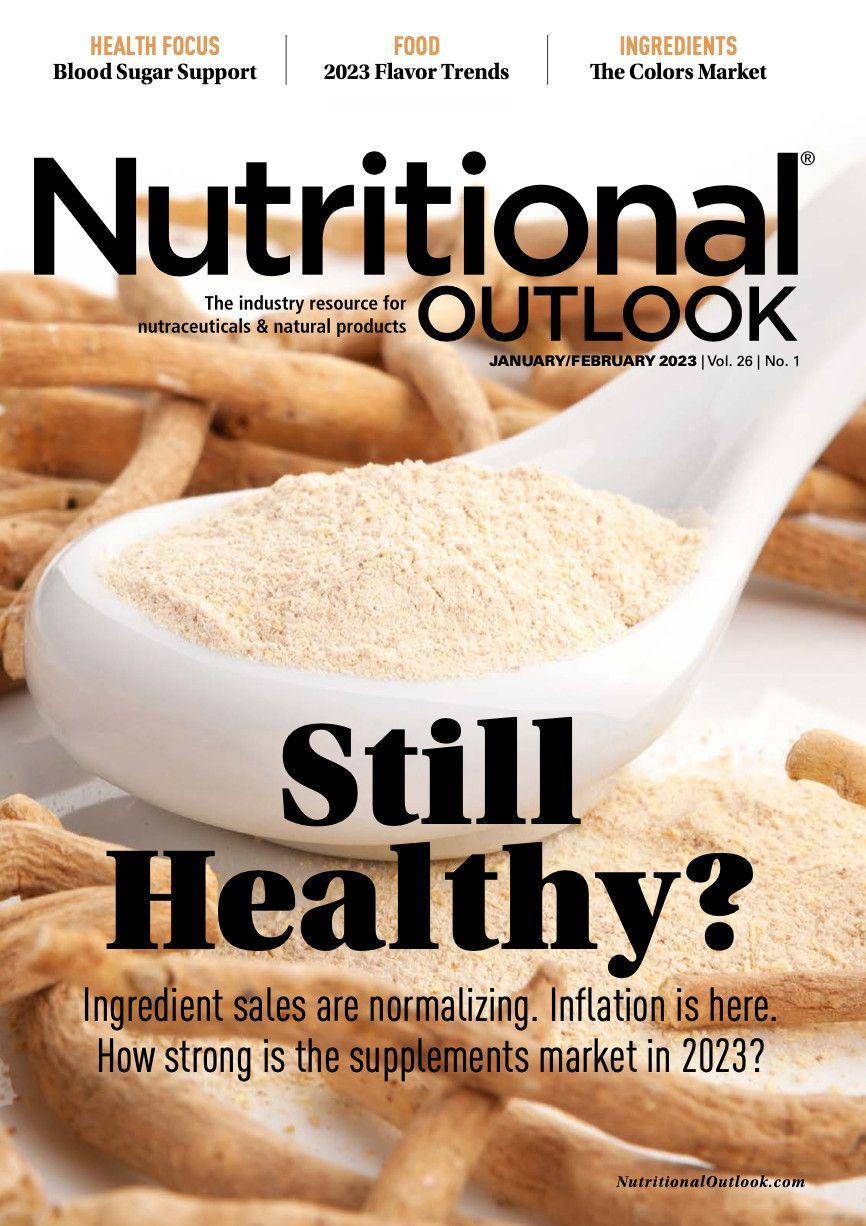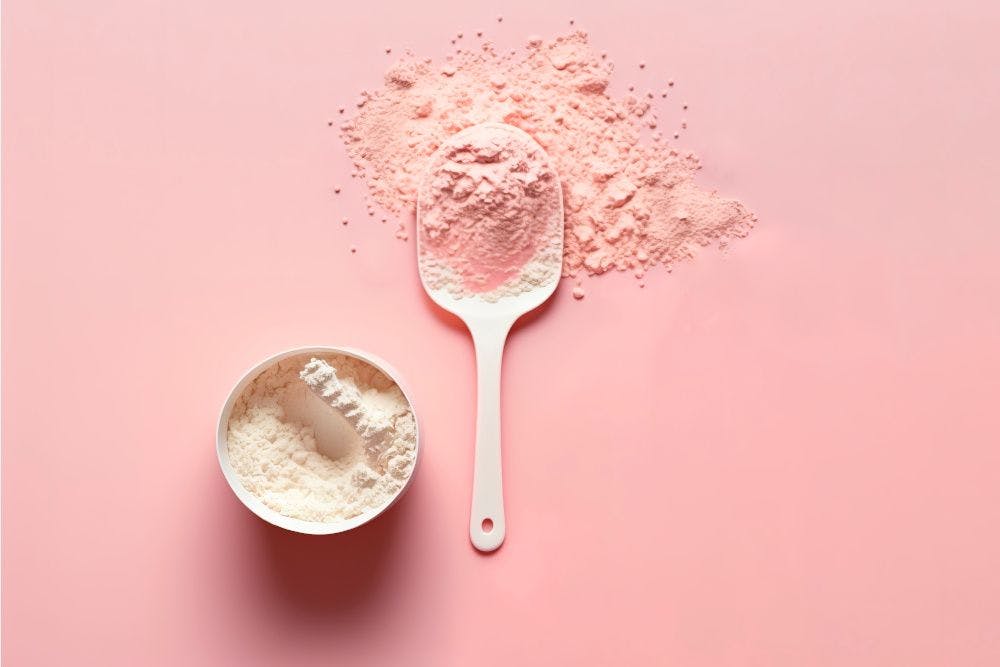Heroic efforts: How contract manufacturers are gearing up for a rocky road ahead
What does contract manufacturing for dietary supplements look like in 2023?
© Who Is Danny / Stock.adobe.com

The word hero got plenty of play over the past few years, both in its literal sense and as hyperbole. But quiz most supplement brand managers on who they think the real heroes are, and they’ll really mean it when they point straight to their trusty contract manufacturers.
And for good reason: these guardians of the health-and-wellness galaxy were the first to step up when facilities shut down, supply chains snapped, and it seemed like the whole world was careening toward a crash.
Yet while they deserve the laurels we’ve heaped upon them, our industry’s behind-the-scenes heroes aren’t resting on their laurels just yet.
Why not? Because, for one, they know that 2022’s tumult is bound to follow us into 2023. And for another, says Sara Lesina, MBA, general manager, business unit, Europe, Sirio Pharma (Pritzwalk, Germany), “Consumers the world over want to move on to the next stages of their lives.”
And when they do, she continues, contract manufacturers—in their typically heroic fashion—“will be eager to support them in meeting their therapeutic needs and health aspirations.”
Picture of Health
If Lesina were to paint a picture of the contract-manufacturing landscape circa early 2023, “It would probably look like Damien Hirst’s Cherry Blossoms series,” she says. “This is where the artist says about his compositions, ‘They’re decorative, but taken from nature. They’re about desire and how we process things around us and what we turn them into, but also about the insane visual transience of beauty—a tree in fully crazy blossom against a clear sky.’”
That’s quite a picture—but what does it have to do with contract manufacturing? More than you might think. As Lesina explains, “After a long, dark period in which the world grappled with pandemic, supply-chain disruptions, war, and economic challenges, we see signs of hope and recovery.”
And we see consumers continuing their patronage of nutritional supplements and functional foods, even without a global plague staring them in the face. In fact, industry analysts expect growth to lift the international nutraceutical market from its current value of roughly $350 billion to approximately $650 billion by 2030, Lesina says.1
Building Momentum
Such growth reflects the momentum that health-and-wellness brands need to justify investing “considerable financial and organizational resources” into reaching consumers, Lesina continues, and that leads her to foresee “tremendous growth ahead.”
Maxine Weber, director of marketing, nutraceuticals, Ashland (Wilmington, DE), agrees. Mintel data on the supplement market at large show that consumer interest in new-product development “is certainly picking up versus 18 months ago,” she says, adding that an 8.7% uptick in North American product launches from 2021 to 2022 provides “a good indication that companies know consumer demand is out there.”
Splatter Paintings
Vincent Tricarico, executive vice president, NutraScience Labs (Farmingdale, NY), is only slightly less sanguine.
When asked what sort of picture he’d paint to represent the current state of wellness-industry contract manufacturing, he offers “a bunch of splatter paintings.”
That may sound dire—and indeed, Tricarico’s choice nods at dampened near-term demand for contract-manufacturing services. But, he emphasizes, “We typically see searches and inquiries tail off around this time of year—the COVID years of 2020 and 2021 being exceptions. So while this trend will continue through mid-January, from there demand will ramp up very quickly and stay that way until summer.”
Tricarico notes that some businesses—likely those that have factored these ups and downs into their marketing and positioning plans—will have strategies “sound enough to roll into the new year.” Less-prepared companies, on the other hand, “might be timid or calculated in their approach,” he suspects.
Either way, he sees light ahead: “I have no doubt that as the year progresses, the picture will become clearer,” Tricarico declares.
Rising Tides
But clearer doesn’t mean cloud-free. And as Lesina concedes, “It’s no mystery that challenges will emerge this year.”
Some will even carry over from the previous one, like inflation. Rising prices for everything from shipping and storage space to active ingredients and packaging continue to weigh not just on contract manufacturers, but on their customers and, to some extent, consumers, too.
And with war still roiling Europe, “Fuel prices continue to be on a rollercoaster,” Tricarico observes. “Distribution into and out of these regions is effectively nonexistent, and businesses relying on sales originating from Russia or Ukraine are in trouble.”
As for wages, high turnover has conspired with lingering pandemic-era worker shortages to send the price of labor skyward. “And because the labor market is tight,” adds Kapish Karan, senior technical leader for pharmaceuticals at Ashland, “candidates sometimes have fewer skills. That means training can take longer, and getting new people up the learning curve adds costs.”
Nevertheless, contract manufacturers have tools in their kit to cultivate and retain talent. Notes Tricarico, “I’ve found that providing a supportive corporate culture and stressing the importance of work-life balance has helped us keep many of our A players.”
And as for tackling inflation more generally, contract manufacturers are pulling out all the stops. “We’ve been working to automate and streamline production so that we can eliminate waste in our processes and improve our cost position,” says Doug Grubbe, Ashland’s business manager for nutraceuticals. “With limited opportunities to drive down direct costs, we continue working to find alternate sources of raw materials to increase our leverage in price negotiations.”
Wiser This Time
Though the price of seemingly everything remains high, “Recently,” Tricarico says, “I’ve noticed these costs stabilize somewhat. They’re still big concerns, but we seem to be through the worst of it.”
Anurag Pande, PhD, vice president, scientific affairs, Sabinsa (East Windsor, NJ), adds that “inflation hasn’t turned the customer’s focus away from health. Health and wellness remain on consumers’ agendas, creating the demand that allows new products to keep entering the market—and that keeps contract manufacturers running full production shifts.”
It also has them thinking ahead. Now that they’re armed with the hard-won wisdom of COVID’s crash courses in supply-chain management, consumer behavior, and more, they’re better prepared to weather whatever storms await, too.
“Experience counts when disruptions hit,” Tricarico asserts. “Strong vendor relationships, realistic forecasting, and disciplined purchasing practices have helped certain facilities shine; those that failed to purchase ahead, accurately forecast, or build relationships with their vendors are still struggling.”
Forward Thinking
One of Sabinsa’s strategies is an initiative to “gear up our packaging supply chain and work with those suppliers more closely,” Pande says. The company has also doubled finished-dosage manufacturing and expanded analytical lab capacity at its Utah location to “cope with heightened production and testing requirements in the North American market.”
Meanwhile, Sirio deliberately locates its worldwide manufacturing assets better to create ‘a cohesive, connected international supply chain capable of managing the ups and downs of global markets and economies,” Lesina claims.
Yet at the same time, “We understand the importance of being close to markets and offering products and services tailored to local consumer and customer needs,” she continues. Thus the company invested in its German operations over the past two years “to ensure that they’re future-proof and able to weather increased commercial demand and competition across Europe,” she says, and it based its global R&D center in Shanghai—“the perfect location to co-create and launch formulations with our customers”—precisely to encourage such collaboration.
Perfect Platforms
Another way that contract manufacturers are anticipating the future is by monitoring consumers’ nutritional-product preferences.
While capsules, tablets, and traditional oral solid-dose forms did the trick for years, an evolving consumer, as well as improving production technologies, have made softgels and gummies—which Lesina calls “the rising champions”—the norm. “One glance down any nutritional-supplement aisle in any grocery or pharmacy in the world supports this,” she says.
In fact, Lesina characterizes herself as “a huge fan of gummies, not only because they’re tasty and easy to take, but because, frankly, the science behind the dosage form has made huge leaps in the past five years.”
That being the case, Sirio in 2018 announced a 10-year capacity-growth plan for its Ma’anshan, Anhui, campus, as well as the opening of a new gummy plant at the same location, both of which Lesina says will “keep up with growing demand for the category.”
Aside from gummies, Karan points to premixes, stick packs, and other non-tableted formats as options gaining traction with consumers who expect variety, convenience, and portability. “And in terms of ingredients,” he adds, “we see increased demand for fermented vitamins and organic ingredients.”
Whatever the platform or formulation, “It’s important to remember that this entire category is driven primarily by consumers who are increasingly selective about the supplements they buy,” Lesina cautions. Pill fatigue is real, she insists, and should guide brands’ and manufacturers’ decisions around which new forms to pursue. “No matter how effective an active may be,” she says, “it will never deliver its therapeutic effect if consumers don’t take it as prescribed or recommended.”
Value Added
Fortunately, contract manufacturers are tooling up their production lines accordingly—and then some.
“In every industry, you’ve got to adapt,” Tricarico says, “and over the next twelve months, I’d like to aggressively leverage our 120-plus years of nutraceutical-industry experience to branch out into services beyond packaging, label design, and fulfillment and provide incentives to customers who frequently order from or remain loyal to us.”
Pande says that Sabinsa offers its partners original-design manufacturing services, “which take one problem off their shelves: sourcing materials for formulations.” Moreover, among Sabinsa Utah’s 2023 goals is an expansion into cosmetic manufacturing, a sector that Pande wagers “will be much in demand, given that many of our cosmeceutical ingredients are used in personal-care products, too.”
Similarly, Ashland has courted calls from personal- and oral-care customers interested in incorporating the company’s nutraceuticals into products, Karan says. Novel delivery systems like the company’s StableFizz effervescent granulation let such brands create fizzy beauty-from-within drinks, he claims, “without significant investment in humidity-controlled packaging.”
But Tricarico believes it’s still the basics that form the foundation of a fruitful contract-manufacturing relationship—especially in unpredictable times. “The most important thing now is communication,” he maintains: “with suppliers, employees, and customers. If you stay focused on delivering accurate and timely information, you continue doing the best job possible for your stakeholders.”
And if that’s what a splatter painting looks like, it’s not too shabby. “We know consumers will focus on their health now more than ever,” Tricarico says. “Companies with compelling products and stories to tell will continue to win with them. We look forward to supporting those companies.”
Reference
- Allied Market R. Nutraceuticals Market. January 2022. https://www.alliedmarketresearch.com/nutraceuticals-market

Prinova acquires Aplinova to further increase its footprint in Latin America
April 7th 2025Prinova has recently announced the acquisition of Brazilian ingredients distributor Aplinova, which is a provider of specialty ingredients for a range of market segments that include food, beverage, supplements, and personal care.

























